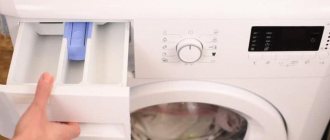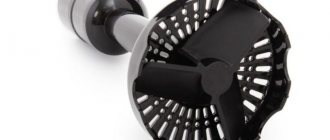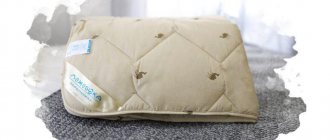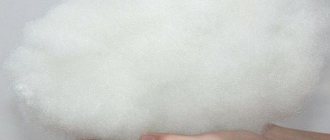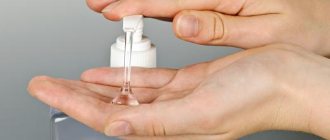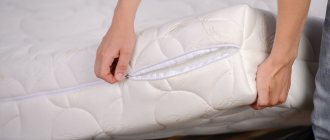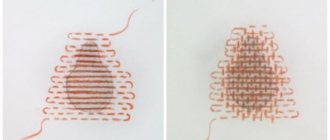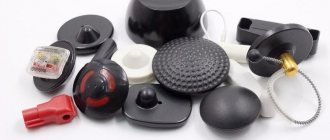Many buyers still don’t know which is better – holofiber or padding polyester. Both fillers are white, elastic, warm, made of synthetic fibers. Then why is there such a difference in price? And is it worth saving on filling for outerwear and bedding? After reading this article, you will see the differences between padding polyester and holofiber, and then make the right decision.
Description and properties of padding polyester
Sintepon appeared in 1935 in Great Britain. It is most often used as a filling for jackets, pillows, quilts, upholstered furniture and children's toys. Judging by reviews on the Internet, many people buy material the old fashioned way because they do not know about the benefits of new synthetic fabrics.
Mode of production
Synthetic winterizer is made from polyester fibers, the raw materials for which are petroleum products. Moreover, second-class waste is often used in production. This negatively affects the performance and service life of the product.
Synthetic fibers can be bonded in the following ways:
- Thermal . Polyester threads melt and bond under high temperatures.
- Needle-punched . The most modern and expensive technology, which is still rarely used. The fibers are held together by weaving and securing the multi-directional threads using toothed combs.
- Glueev . The simplest, cheapest, but not environmentally friendly way. Fibers glued together using latex emulsion disintegrate when washed. And in some people (especially children and the elderly), such fabric causes allergic reactions.
How to determine the production method of a material? Touch the surface of the canvas. Rigidity and the presence of a light crust indicate the use of glue.
Performance characteristics
Sintepon differs from holofiber in lower performance characteristics. Although they usually appear after some time. The main disadvantages of the material include the following:
- tendency to deform . Even after the first wash, the fabric may shrink or form clumps. To prevent deformation, you need to wash the product by hand or put tennis balls in the machine;
- low insulating properties . The filler is able to retain heat, but not for long. A person will freeze in such a jacket if the temperature drops below minus 8-10 °C. Therefore, demi-season items are more often made from synthetic padding than down jackets;
- the filler does not “breathe” . The polyester fibers fit too tightly together to allow air to pass through. That's why people sweat quickly in padding polyester jackets.
The advantages of the material include low weight, ability to hold its shape, and versatility. It does not breed dust mites, as in feather or down fillers.
However, holofiber also has the listed advantages. But the significant difference between padding polyester is its convenience in sewing production. It is easier to sew quilted items from such material.
Rules of care
The filler must be handled very carefully so that it lasts for many years. It is better to wash outerwear and bedding by hand using liquid detergents. Washing in an automatic machine is also allowed, but only on a delicate cycle and at low spin speeds (400-500). Do not use chlorine bleaches. Items made from adhesive synthetic padding will have to be dry-cleaned, as they can be damaged by home washing.
The label usually indicates how many degrees the product will withstand when washed. Usually this is no more than 30-40 °C. Clothes with padding polyester are dried in a vertical position (preferably hung on hangers) away from the heating radiator. Iron things with an iron at minimum temperature through cotton fabric.
Reviews
I bought myself a blanket made from holofiber on the advice of a friend. At first I was still skeptical about synthetics. But I really liked it. Warm, soft, maintains temperature. I want to buy another one for my relatives.
Elena, Smolensk
I bought myself a jacket for the winter. I don’t want to bother with down jackets, so I decided to use artificial insulation. The store advised me to buy it with holofiber. I'm happy with the purchase, it warms well in winter.
Mikhail, Nizhny Novgorod
I have two preschool children. I always try to buy them quality clothes. I heard a lot of positive reviews about holofiber, so I bought overalls with it for the children for the winter. The result is that they never got sick last winter.
Tatyana, Omsk
Originally posted 2017-12-21 06:37:34.
Description and properties of holofiber
Holofiber appeared on the market only in 2005. Today it is widely used in light industry (including the production of outerwear, bedding, toys), as well as for insulation and soundproofing of buildings, filtration of air systems.
Mode of production
Unlike padding polyester, holofiber is made from fibers that have gone through several stages of processing and are absolutely safe for health. The threads of the material are very thin and filled with air inside. Special equipment weaves them into multiple springs. The result is an elastic, soft, almost weightless fabric.
What is the difference between padding polyester and holofiber in appearance? The first has a white matte color, and the second has a snow-white glossy color. The synthetic winterizer feels dense and smooth, while the holofiber feels silky and loose.
Performance characteristics
Since there are many voids between the fibers of holofiber, it passes and retains air well. This material is warmer than synthetic winterizer. A person sweats less in it, which is why holofiber is widely used in the production of workwear, ski jackets and camping equipment.
In addition, the filler has the following characteristics:
- does not deteriorate under the influence of hot water, detergents and spin;
- easily restores its original shape;
- hypoallergenic;
- dries quickly;
- does not accumulate foreign odors.
However, holofiber is not a very pliable material. When you try to sew quilted items yourself, the filling slips and spreads inside the fabric.
Rules of care
It is easier to care for holofiber than padding polyester. No matter what temperature the water is, it will not spoil. However, it is better to wash outerwear at 40-60 degrees, since they are made from different synthetic materials.
Holofiber can withstand washing, spinning and even drying in an automatic machine. Items made from it can be dried in any position, but vertical is better. As a rule, products with such a filler are not ironed.
WHAT IS HOLLOFIBER®
Brand
Holofiber is a registered trademark.
Holofiber is a highly effective insulation and filler.
The Hollofiber brand produces innovative nonwoven materials for most industries. Holofiber is a domestic development that 100% replaces similar imported products.
The universal materials and technologies of Holofiber are noted in more than 100 patents.
Holofiber is made from chemical fibers of the highest quality.
In terms of its properties and performance characteristics, Holofiber is superior to almost all natural, artificial and foreign synthetic materials.
The unique properties of the product have been proven in laboratories in Russia, Belarus, Germany, Belgium, and Canada. Holofiber is certified, tested and tested in specialized laboratories, centers and research institutes.
Holofiber materials are environmentally friendly.
The Holofiber trademark was registered in Russia in 1997. Since 2004, all rights to the Holofiber trademark belong to. In 2010, Holofiber was registered as OTZ (Well-known trademark. Rospatent, No. 101). Holofiber is registered in Belarus, Kazakhstan and Ukraine. Holofiber is used on space stations!
Which material is better - conclusion
The composition and characteristics of both fillers described above can be reflected in one table. Then it will become obvious which one is better.
Table 1 “Which is better: padding polyester or holofiber”
| Criterion for comparison | Sintepon | Holofiber |
| Health safety | + | |
| Durability | + | |
| Tactile sensation when wearing/using | + | |
| Ability to keep fit | + | |
| Thermal insulation | + | |
| Ventilation properties | + | |
| Pliability when sewing | + | |
| Easy to care for | + | |
| Versatility | + | + |
| Price | + |
Holofiber wins by a huge margin. Although the choice of this or that material largely depends on your goal. For example, budget padding polyester is quite suitable as a filler for decorative pillows.
Classification according to the method of filler distribution
The holofiber is in a special case. There are several varieties of these covers, which determine the location of the filler. On the modern bed linen market you can find the following varieties:
- Cassette is the highest quality and most reliable method of assembly. This affects the price, but the filler inside is distributed as evenly as possible. Here, its movement is excluded, since the structure of the blanket consists of several separate sections.
- Karostep - the stitch here is performed in the form of a pattern or design. Due to the presence of a pattern or pattern, the insulation receives greater fixation than without it. The cost of such a case is average.
- Quilted - these covers are quilted together with the filling. This is the most economical method, but it is also the least resistant to migrations. Over time, holofiber may move to the side.
The material of the case may vary depending on the model. For this, calico, satin, and other fabrics are used. When using any fabrics, the above assembly options are encountered.
Application area
Despite some disadvantages, synthetic winterizer remains the most popular insulation material. It is used in the following cases:
- As layers of upholstered furniture. They fill sofas, armchairs, and ottomans.
- It is used to make sleeping bags, tents, and camping equipment.
- An excellent filler for winter dutik (quilted boots).
- For sewing demi-season outerwear: jackets, overalls, coats.
- They fill blankets, mattresses, and pillows.
- As a filter material in air conditioners and air systems.
- As insulation for some building elements.
How to clean a product with down filling
Experts advise washing items filled with natural down only by hand. Detergents should be gentle, and the water temperature should not exceed 30 °C. Do not twist the item out of the basin, but lightly squeeze out the moisture. You need to dry a product with natural down in a horizontal position, laying it out on a sheet or on porous paper. It is necessary to ensure that there are no unpleasant odors in the room where the item is drying, because the fluff will “willingly” absorb them. It is better to dry blankets, pillows, jackets close to radiators, but not on them!
